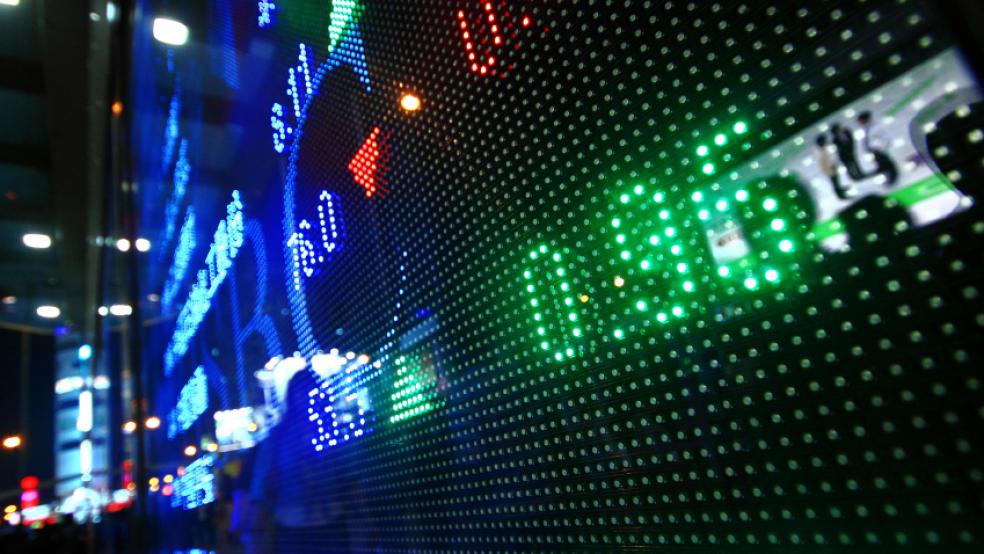Equities have gotten a little shaky this week as the machinations of Greek bailout negotiations continue. But let's not forget that the Nasdaq Composite recently eclipsed its dot-com era highs. Or that the Russell 2000 has been on the move, too.
With the Federal Reserve mulling its first interest rate hikes since 2006, the chatter is growing louder: Could this be the beginning of the end of another stock market bubble?
Related: Boomers, It's Time to Cash Out of This Bubble
Andrew Garthwaite, global equity strategist at Credit Suisse, recently broke the situation down in a note to clients. To summarize, stocks have further to run over the medium term; but are likely headed into bubble territory before it's all said and done.
He bases this on the equity risk premium — the return investors demand over risk-free Treasury bonds. When stock prices rise, the ERP declines. It is set to contract from around 5 percent now to below 4 percent. Market peaks tend to occur when the measure falls to around 2.4 percent on average.
On a price-to-earnings basis, Garthwaite notes that the current S&P 500 12-month forward multiple stands at 16.8 vs. a fair-value estimate of 18.3. Market peaks have historically occurred with a P/E near 23 on average, which implies stocks have 40 percent upside potential from here.
That would be enough to take the S&P 500 to nearly 3,000.
Other supportive factors include excess liquidity (with growth of the M1 measure of the money supply running hotter than the rate of GDP growth), corporate net buying at 6.6 percent of total market capitalization (with $5.5 trillion of potential buying firepower still available) and risk appetites at only neutral levels.
Related: 7 Quirky Economic Indicators – from Dogs to Guns
Overall, fewer than 20 percent of the factors signifying a market bubble, in his calculation, are flashing warning signals. These include a recent backslide in corporate profits (mainly due to energy prices) and a pick-up in M&A activity.
His confidence is bolstered by a number of catalysts that have turned positive lately.
For one, U.S. and global earnings revisions have turned positive. High-yield bond spreads, setting aside the energy sector, have tightened since February. The correlation between stock price multiples and inflation expectations has been reestablished, a sign investors are viewing a turnaround in prices as a sign of economic vitality instead of worrying about Fed rate hikes or stagflation. China's economy seems to have stabilized, led by a turnaround in housing. And the U.S. economy is showing signs of reacceleration after a disappointing start to the year.

As for why we could eventually head into another stock market bubble, Garthwaite blames the central banks. The four major central banks — the Federal Reserve, the European Central Bank, the Bank of Japan and the Bank of England — are set to increase the size of their balance sheets by 14 percent over the coming year. Even if the Fed makes an initial tightening of policy in September, as is widely expected, monetary policy globally will remain extremely loose.
Another interesting dynamic in play is the role large collapses in the price of crude oil have played in fueling market bubbles. The last two oil supply shocks, in 1985 and 1998, saw this happen. The lower prices provide a disinflationary shock initially, keeping central bankers accommodative while the positive impact to consumer spending takes up to 18 months to kick in.
Related: Four Reasons Oil Could Fall to $40 a Barrel
The result is that the economy and financial markets are doused with cheap money as consumers start to spend their energy windfall — resulting in economic overheating, rising inflation, speculative fever and then a bursting bubble.
Overall, Garthwaite places the risk of an eventual bubble in the 60 percent to 70 percent range. Until then, he recommends that investors focus on areas best positioned to gain from the eventual buildup of speculative excess: Asset managers, new economy (biotech, Internet) and financials.
So while stocks could suffer their first 10 percent plus correction soon in response to a messy resolution to the Greek debt standoff or in a nasty reaction to the Fed's rate liftoff (stocks have fallen 7 percent on average following first rate hike in a tightening cycle), it's likely to be another buying opportunity ahead of even higher prices. The fall will eventually come. Just not yet.
Top Reads from The Fiscal Times:



